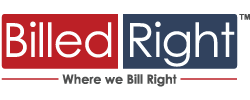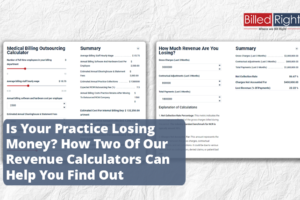Understanding Healthcare Compliance: What Every Practice Needs to Know

Healthcare compliance refers to the process of adhering to established guidelines, regulations, and standards set forth by regulatory bodies in the healthcare industry. These guidelines ensure that healthcare practices operate within legal and ethical boundaries, safeguarding patient safety and data privacy.
Compliance is critical for several reasons:
- Patient Safety and Quality of Care: Ensuring compliance helps maintain high standards of patient care, reducing the risk of medical errors and enhancing patient outcomes.
- Legal and Ethical Standards: Compliance ensures that healthcare providers adhere to legal and ethical standards, protecting them from lawsuits, fines, and reputational damage.
- Financial Integrity: Proper billing practices and accurate coding prevent fraudulent claims and financial penalties, ensuring the financial health of the practice.
- Regulatory Requirements: Meeting the requirements of regulatory bodies such as HIPAA, OSHA, and CMS is mandatory. Non-compliance can result in severe penalties, including the loss of licenses and accreditation.
Failing to comply with healthcare regulations can have serious consequences:
- Legal Repercussions: Non-compliance can lead to lawsuits, fines, and sanctions from regulatory bodies.
- Financial Penalties: Practices may face substantial financial penalties for non-compliance, including fines for data breaches or fraudulent billing practices.
- Reputation Damage: Non-compliance can severely damage a practice’s reputation, leading to loss of patient trust and a decline in patient numbers.
- Operational Disruptions: Regulatory investigations and sanctions can disrupt the normal operations of a healthcare practice, leading to decreased efficiency and increased operational costs.
- Patient Harm: Ultimately, non-compliance can result in harm to patients, either through compromised data security or substandard care practices.
By understanding the importance of healthcare compliance and the severe consequences of non-compliance, healthcare practices can prioritize establishing robust compliance programs to ensure they meet all necessary regulations and standards.
II. What is Healthcare Compliance?
Healthcare compliance refers to the adherence to laws, regulations, and guidelines set by regulatory bodies to ensure safe, ethical, and high-quality medical practices.
Healthcare compliance covers several key areas:
- Patient Privacy: Protecting patient information and ensuring confidentiality, primarily governed by HIPAA regulations.
- Billing Practices: Accurate and honest billing and coding practices to prevent fraud and abuse.
- Clinical Procedures: Adhering to standards and protocols to ensure patient safety and quality care.
Key Regulatory Bodies
- HIPAA (Health Insurance Portability and Accountability Act): Governs patient data privacy and security.
- OSHA (Occupational Safety and Health Administration): Ensures workplace safety and health standards.
- CMS (Centers for Medicare & Medicaid Services): Regulates billing and reimbursement practices for Medicare and Medicaid.
- OIG (Office of Inspector General): Oversees and enforces compliance with healthcare fraud and abuse laws.
III. Core Components of Healthcare Compliance
Compliance Plan
A compliance plan is a structured framework that outlines the policies, procedures, and actions required to ensure a healthcare practice adheres to all relevant laws and regulations.
A comprehensive compliance plan is built on several key elements:
- Policies and Procedures: Clearly defined rules and guidelines for operations.
- Audits: Regular internal and external reviews to ensure adherence to compliance standards.
- Risk Assessment: Identifying and evaluating potential compliance risks.
- Documentation: Keeping detailed records of compliance efforts and outcomes.
Training and Education
Ongoing staff training ensures that all employees are knowledgeable about compliance requirements, helping to prevent errors and misconduct.
Monitoring and Auditing
Regular monitoring and audits help detect and correct compliance issues early, ensuring continuous adherence to regulations.
Common methods and tools for effective auditing include:
- Internal Audits: Conducted by staff to assess compliance with internal policies.
- External Audits: Performed by third parties to provide an objective review.
- Compliance Software: Tools that automate monitoring and reporting tasks.
Reporting and Corrective Action
A reporting system allows staff to report compliance concerns anonymously, fostering a culture of transparency and accountability.
These are the correct steps to take corrective action when compliance issues are identified:
- Identify the Issue: Determine the nature and scope of the compliance problem.
- Investigate Thoroughly: Conduct a detailed investigation to understand the root cause.
- Implement Solutions: Take corrective measures to address the issue and prevent recurrence.
- Document Actions: Keep thorough records of the issue and the steps taken to resolve it.
IV. Key Areas of Compliance
Patient Privacy and Confidentiality
- HIPAA Regulations and Their Importance:
- HIPAA (Health Insurance Portability and Accountability Act) sets the standard for protecting sensitive patient data. Compliance with HIPAA ensures that patient information is handled securely and confidentially, preventing unauthorized access and breaches.
- Examples of Common Privacy Violations and How to Avoid Them:
- Unauthorized Access: Staff accessing patient records without a valid reason. Avoid by implementing strict access controls and regular monitoring.
- Improper Disposal of Records: Disposing of patient records in regular trash. Avoid by using secure disposal methods such as shredding.
- Unencrypted Data Transmission: Sending patient information via unsecured email. Avoid by using encrypted communication channels.
Billing and Coding
- Significance of Accurate Billing and Coding:
- Accurate billing and coding are essential for ensuring that healthcare providers receive appropriate reimbursement for services rendered. It also helps in maintaining compliance with insurance and governmental regulations.
- Common Billing Errors and Their Consequences:
- Upcoding: Billing for a more expensive service than what was provided. Consequences include fines and legal action.
- Under-coding: Failing to bill for all services provided. Consequences include loss of revenue and potential audits.
- Duplicate Billing: Charging multiple times for the same service. Consequences include financial penalties and damage to reputation.
Fraud and Abuse Prevention
-
- Healthcare Fraud: Intentional deception or misrepresentation made by a person or entity to gain an unauthorized benefit.
- Healthcare Abuse: Practices that result in unnecessary costs to healthcare programs through improper payment or overuse of services.
- Examples and Prevention Strategies:
- Examples:
- Kickbacks: Receiving payments for patient referrals.
- False Claims: Submitting claims for services not rendered.
- Prevention Strategies:
- Implementing Robust Compliance Programs: Establish policies and training to detect and prevent fraud and abuse.
- Regular Audits: Conduct internal and external audits to identify and rectify fraudulent activities.
- Whistleblower Programs: Encourage staff to report suspicious activities anonymously.
- Examples:
Conclusion
- Compliance is crucial for healthcare practices to ensure patient safety, maintain legal integrity, and enhance operational efficiency. It protects against legal and financial risks while fostering patient trust through ethical practices.
- It is essential for practices to adopt a proactive approach to compliance. By staying informed about regulatory changes, implementing robust compliance programs, and training staff effectively, practices can mitigate risks and ensure sustained compliance.
- As we continue to explore the intricacies of healthcare compliance, future blogs will delve deeper into specific compliance topics. Stay tuned for insights on patient privacy, billing practices, fraud prevention, and more.
This approach not only ensures regulatory adherence but also enhances overall patient care and operational excellence.
For further reading, explore our upcoming blogs and resources dedicated to mastering healthcare compliance.







